How to use Python to automatically fill in questionnaires
This article mainly introduces relevant information about automatically filling in questionnaires through Python. Friends who need it can refer to it
0X00 Preface
School is about to start, and I saw various requests for filling out questionnaires in the space, and then I remembered that I haven’t done it yet. I don't like this kind of meaningless questionnaire, so I plan to use "stunt" to complete it, that is, python. By the way, I will review python again, which I haven't used in a long time. Next, the performance begins...
0X01 Code writing ideas
First create a questionnaire

We fill out a random questionnaire and submit it, and open Burpsuite to intercept the data packets before submitting.

Analyze the intercepted data packets, and some of them are URL encoded. It is not conducive to analysis. You can use the Burpsuite encoding module to decode and replace it, so that it is easier to analyze.

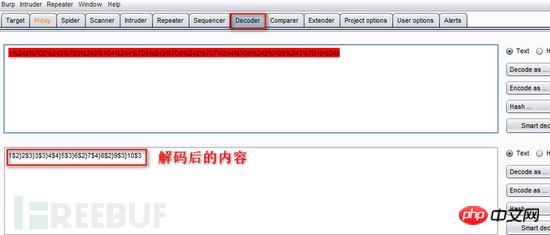

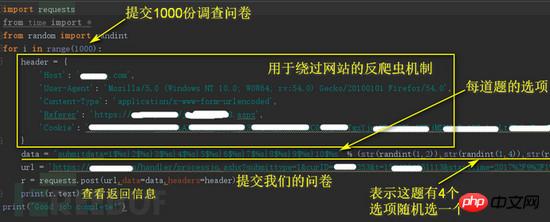

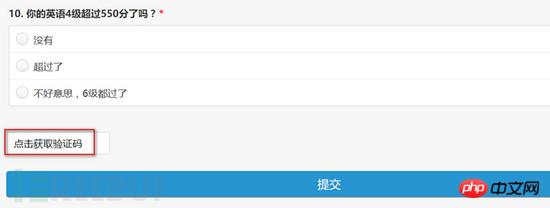
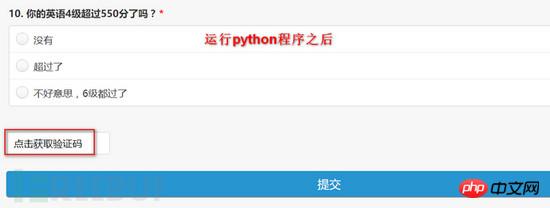

Does that mean we have to add the function of extracting free proxy IP to the python code? NO NO NO! To change the way of thinking, you will encounter a problem in the CTF competition. For example, you can get the flag only if your IP is from Germany. Therefore, our idea is to spoof the data packet header, forge our IP, and deceive the server. Let’s talk about several ways to fake IP.
X-Client-IP:1.1.1.1 X-Remote-IP:2.2.2.2 X-Remote-Addr:3.3.3.3 X-Originating-IP:4.4.4.4 X-Forwarded-For:5.5.5.5
Let’s try each one, and then we can see the source of our questionnaire in the background statistics

Here we found that X-Forwarded-For can be used to bypass it. We will use this method to add the X-Forwarded-For field in the header information, so the modified script is as follows
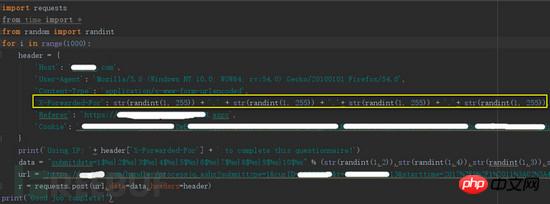
The running results are as follows
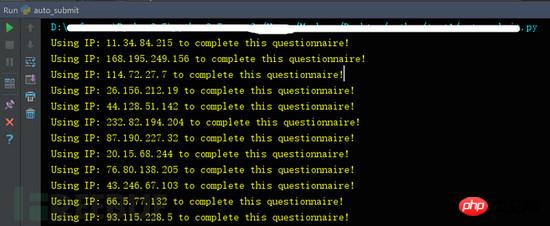
Go to the background to check the statistics

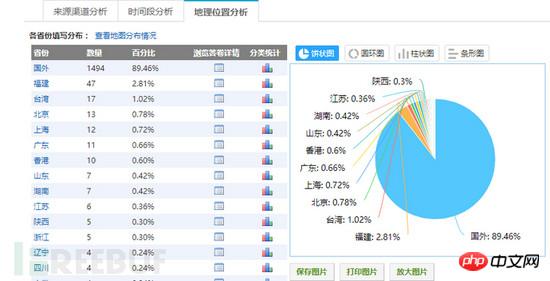
At this point, we have solved the task perfectly. If you want to remove IP addresses outside the questionnaire, you can collect Chinese IP address segments, then add them to the program and process them.
0X02 Summary
Everyone can usually apply what they have learned to real life. When you encounter difficulties, don’t panic and think more. , find the optimal solution. For example, above, I did not add a verification code recognition module to the code, nor did I use a proxy to bypass the website's anti-crawler mechanism. Instead, I analyzed the website's anti-crawler mechanism and used the security knowledge I learned (HTTP Header deception) Solve the problem easily and complete the task perfectly using the shortest code.
The above is the detailed content of How to use Python to automatically fill in questionnaires. For more information, please follow other related articles on the PHP Chinese website!

Hot AI Tools

Undresser.AI Undress
AI-powered app for creating realistic nude photos

AI Clothes Remover
Online AI tool for removing clothes from photos.

Undress AI Tool
Undress images for free

Clothoff.io
AI clothes remover

AI Hentai Generator
Generate AI Hentai for free.

Hot Article

Hot Tools

Notepad++7.3.1
Easy-to-use and free code editor

SublimeText3 Chinese version
Chinese version, very easy to use

Zend Studio 13.0.1
Powerful PHP integrated development environment

Dreamweaver CS6
Visual web development tools

SublimeText3 Mac version
God-level code editing software (SublimeText3)

Hot Topics
 Is the conversion speed fast when converting XML to PDF on mobile phone?
Apr 02, 2025 pm 10:09 PM
Is the conversion speed fast when converting XML to PDF on mobile phone?
Apr 02, 2025 pm 10:09 PM
The speed of mobile XML to PDF depends on the following factors: the complexity of XML structure. Mobile hardware configuration conversion method (library, algorithm) code quality optimization methods (select efficient libraries, optimize algorithms, cache data, and utilize multi-threading). Overall, there is no absolute answer and it needs to be optimized according to the specific situation.
 How to convert XML files to PDF on your phone?
Apr 02, 2025 pm 10:12 PM
How to convert XML files to PDF on your phone?
Apr 02, 2025 pm 10:12 PM
It is impossible to complete XML to PDF conversion directly on your phone with a single application. It is necessary to use cloud services, which can be achieved through two steps: 1. Convert XML to PDF in the cloud, 2. Access or download the converted PDF file on the mobile phone.
 What is the function of C language sum?
Apr 03, 2025 pm 02:21 PM
What is the function of C language sum?
Apr 03, 2025 pm 02:21 PM
There is no built-in sum function in C language, so it needs to be written by yourself. Sum can be achieved by traversing the array and accumulating elements: Loop version: Sum is calculated using for loop and array length. Pointer version: Use pointers to point to array elements, and efficient summing is achieved through self-increment pointers. Dynamically allocate array version: Dynamically allocate arrays and manage memory yourself, ensuring that allocated memory is freed to prevent memory leaks.
 Is there any mobile app that can convert XML into PDF?
Apr 02, 2025 pm 08:54 PM
Is there any mobile app that can convert XML into PDF?
Apr 02, 2025 pm 08:54 PM
An application that converts XML directly to PDF cannot be found because they are two fundamentally different formats. XML is used to store data, while PDF is used to display documents. To complete the transformation, you can use programming languages and libraries such as Python and ReportLab to parse XML data and generate PDF documents.
 How to convert xml into pictures
Apr 03, 2025 am 07:39 AM
How to convert xml into pictures
Apr 03, 2025 am 07:39 AM
XML can be converted to images by using an XSLT converter or image library. XSLT Converter: Use an XSLT processor and stylesheet to convert XML to images. Image Library: Use libraries such as PIL or ImageMagick to create images from XML data, such as drawing shapes and text.
 How to control the size of XML converted to images?
Apr 02, 2025 pm 07:24 PM
How to control the size of XML converted to images?
Apr 02, 2025 pm 07:24 PM
To generate images through XML, you need to use graph libraries (such as Pillow and JFreeChart) as bridges to generate images based on metadata (size, color) in XML. The key to controlling the size of the image is to adjust the values of the <width> and <height> tags in XML. However, in practical applications, the complexity of XML structure, the fineness of graph drawing, the speed of image generation and memory consumption, and the selection of image formats all have an impact on the generated image size. Therefore, it is necessary to have a deep understanding of XML structure, proficient in the graphics library, and consider factors such as optimization algorithms and image format selection.
 How to open xml format
Apr 02, 2025 pm 09:00 PM
How to open xml format
Apr 02, 2025 pm 09:00 PM
Use most text editors to open XML files; if you need a more intuitive tree display, you can use an XML editor, such as Oxygen XML Editor or XMLSpy; if you process XML data in a program, you need to use a programming language (such as Python) and XML libraries (such as xml.etree.ElementTree) to parse.
 Recommended XML formatting tool
Apr 02, 2025 pm 09:03 PM
Recommended XML formatting tool
Apr 02, 2025 pm 09:03 PM
XML formatting tools can type code according to rules to improve readability and understanding. When selecting a tool, pay attention to customization capabilities, handling of special circumstances, performance and ease of use. Commonly used tool types include online tools, IDE plug-ins, and command-line tools.






